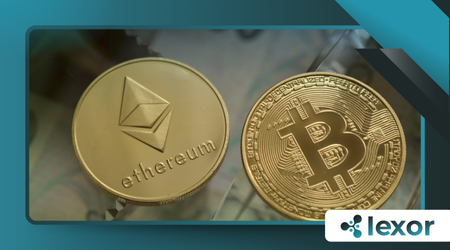Bitcoin vs Ethereum vs Stablecoins: Key Differences Explained

The digital asset landscape is vast and rapidly evolving, but the core foundation rests on three pillars: Bitcoin vs Ethereum vs Stablecoins.
Understanding the distinct roles these three types of assets play is critical for anyone navigating the 2025 crypto economy.
They represent fundamentally different value propositions and technological architectures, moving far beyond mere digital currency status.
How Does Bitcoin (BTC) Differ From Other Digital Assets?
Bitcoin, the undisputed king of crypto, functions primarily as a decentralized store of value. It is digital gold, a permissionless asset with a finite supply capped at 21 million coins.
Its design, focused on security and scarcity, prioritizes immutability over transaction speed or programmability.
Its blockchain operates as a robust, single-purpose ledger. The strength of its network and its deflationary nature make it a hedge against fiat currency devaluation.
Bitcoin established the entire digital scarcity paradigm.
Bitcoin’s value lies in its simplicity and unparalleled decentralization. Critics often point to its limited utility beyond transactions and store of value.
Its conservative development path ensures maximum security and reliability.
Ethereum (ETH) is more than just a currency; it’s a global decentralized computer. It introduced the concept of smart contracts, transforming a simple ledger into a platform.
This innovation birthed Decentralized Finance (DeFi), NFTs, and countless other applications.
The shift to Proof-of-Stake (PoS) and subsequent scaling solutions have dramatically boosted its efficiency.
Read more: Can You Use Crypto in Everyday Life?
Ethereum’s utility is its defining feature, making it a foundational layer for the “world computer.” Its continuous development focuses on improving scalability and reducing high transaction costs.
ETH, the native asset, fuels the network—it’s the “gas” required to execute smart contracts.
This dual nature as both a currency and a necessary utility contrasts sharply with Bitcoin’s singular purpose.
What Role Do Stablecoins Play in the Crypto Ecosystem?
Stablecoins offer the essential bridge between the volatile world of crypto and the stability of fiat currencies.
Their fundamental design goal is to maintain a peg, often to the US Dollar, simplifying transactions and accounting. They are the liquidity rails of the crypto market.
++ How to Spot a Legit Blockchain Project
They achieve their stability through various mechanisms: fiat-backed, crypto-collateralized, or algorithmic means.
Fiat-backed stablecoins, like USDT or USDC, hold corresponding fiat reserves, which is their primary stabilizing factor. This stability is crucial for traders seeking to preserve capital during market downturns.
Regulators globally have increasingly focused on the reserve backing of stablecoins in 2025.
The US GENIUS Act, for instance, has clarified regulatory pathways, recognizing their importance for payments. This regulatory maturation reinforces their mainstream adoption.
++ What Is a Blockchain Explorer and How to Use It
How Do Their Core Technologies and Purposes Diverge?
The differences are most apparent when examining their fundamental architecture and goals. Bitcoin’s blockchain aims for maximum censorship resistance;
Ethereum targets maximum programmability and utility. Stablecoins, conversely, prioritize price stability and fungibility for use in daily transactions.

Bitcoin is akin to a secure vault: strong, unchanging, and primarily for holding significant value.
Ethereum is a bustling metropolis: a dynamic ecosystem with services and commerce built on top of it. Stablecoins are the reliable cash or checking account within that metropolis, enabling smooth trade.
Consider a real estate transaction in 2025. A substantial down payment might be securely stored in BTC, representing long-term value.
++ Bitcoin vs. Ethereum: What’s the Difference?
The property’s title and legal contract could be managed by a Smart Contract on the Ethereum network. Meanwhile, the daily escrow payments could be efficiently handled using a regulated stablecoin.
| Feature | Bitcoin (BTC) | Ethereum (ETH) | Stablecoins (e.g., USDC, USDT) |
| Primary Goal | Store of Value, Digital Gold | Decentralized Application Platform | Price Stability, Digital Fiat |
| Consensus | Proof-of-Work (PoW) | Proof-of-Stake (PoS) | Depends on underlying blockchain |
| Supply | Fixed (21 Million Max) | Deflationary/Elastic (Burning Mechanism) | Elastic (Minted/Burned as needed) |
| Key Function | Scarcity, Censorship Resistance | Smart Contracts, DeFi, NFTs | Payment, Trading Pair, Capital Preservation |
Why is the Market Cap of Stablecoins a Crucial Economic Indicator?
Stablecoin supply and transaction volume are powerful proxies for on-chain economic activity.
A growing stablecoin market capitalization often signals increased liquidity and confidence within the broader crypto sector. This money is poised for action.
According to a report by a16z Crypto in late 2025, the total crypto market cap recently crossed the $4 trillion threshold for the first time.
The report highlighted that stablecoins now power annual transaction volumes that rival major traditional payment networks like Visa and PayPal, underscoring their critical role as the global settlement layer.
When stablecoin volumes swell, it typically indicates a bullish market preparing to allocate capital.
Their role in cross-border payments is another major differentiator. For example, a freelancer in Manila can be instantly paid in a US dollar-pegged stablecoin by a company in London.
This avoids slow, expensive traditional banking channels.
What Are the Trade-offs for Decentralization vs. Stability?
The pursuit of absolute decentralization, like Bitcoin’s, necessitates a tolerance for high volatility. The design is a compromise: maximum security and scarcity at the cost of price stability.
This fluctuation is the cost of being truly permissionless.
Ethereum offers a balance, using PoS to enhance efficiency while maintaining a high degree of decentralization for smart contracts.
Stablecoins, while operating on decentralized blockchains, often rely on centralized entities to hold their fiat reserves. This introduces a point of centralization—a trade-off for price stability.
Is the promise of a digital, programmable future truly possible without a reliable means of instant, stable settlement?
The integration of Bitcoin vs Ethereum vs Stablecoins demonstrates a necessary ecosystem where each plays a distinct, indispensable role.
The most intelligent long-term strategies consider all three as non-competing yet complementary assets, forming the new digital economy’s bedrock.
The key difference isn’t a competition; it’s a co-dependence for a functioning financial system.
Frequently Asked Questions
What is the most significant risk when holding Stablecoins?
The primary risk is a de-peg event, where the stablecoin fails to maintain its intended 1:1 ratio with its pegged asset (typically USD).
This risk is tied to the transparency and solvency of the issuer’s reserves, a crucial focus for regulators in 2025.
Can Ethereum’s upgrades ever make Bitcoin obsolete?
No, Ethereum’s focus on utility and smart contracts does not replace Bitcoin’s core function as a decentralized, immutable store of value.
Their differing design philosophies mean they serve distinct, non-overlapping market needs. The argument for Bitcoin vs Ethereum vs Stablecoins is more about synergy.
Which of these three assets is the best long-term investment?
Investment decisions are highly subjective and depend on individual risk tolerance. Bitcoin is generally viewed as a long-term inflation hedge.
Ethereum is seen as a high-growth utility asset tied to the digital economy’s expansion. Stablecoins are for preservation of capital and high liquidity.
The wise investor builds a portfolio using all three. The ongoing debate of Bitcoin vs Ethereum vs Stablecoins highlights diversity.
How are the three assets currently used by financial institutions?
Institutions use Bitcoin as an asset class for treasury management and investment funds (ETFs). Ethereum is used for tokenizing real-world assets and building private or permissioned DApps.
Stablecoins are used by institutions for nearly instantaneous settlement and collateral management. The interplay between Bitcoin vs Ethereum vs Stablecoins is central to institutional adoption.
Is the supply of Ethereum still inflationary post-Merge?
No. Following the Merge and the implementation of EIP-1559, a portion of transaction fees is burned, leading to periods where the ETH supply becomes deflationary.
The supply of ETH is now elastic, dictated by network usage.
Do all Stablecoins have the same level of risk?
No. Fiat-backed stablecoins (like USDC, with regulated reserves) carry less inherent risk than crypto-collateralized or purely algorithmic stablecoins.
Different stability mechanisms imply different risk profiles, a key area when considering Bitcoin vs Ethereum vs Stablecoins.
What does the term “digital gold” mean for Bitcoin?
It refers to Bitcoin’s characteristics of scarcity, durability, fungibility, and difficulty to confiscate or censor, mirroring the properties of physical gold as a long-term hedge against inflation and a store of value.
